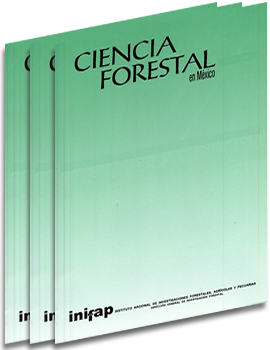CARACTERIZACIÓN DEL COLAPSO EN MADERA ASERRADA DE Euca/yptus globu/us Labill.
Keywords:
Chile, collapse, anatomic structure, conventional kiln, Eucalyptus globulus, wood dryingAbstract
The drying of Eucalyptus wood is one of the main problems to use it far furniture, floors, veneer and other products, because of its permeability and high tendency to attain abnormal shrinkage known as "collapse". In arder to assess and describe the drying process of Euca/yptus g/obu/us wood, an experiment was conducted at the Instituto de Tecnología de Productos Forestales of the Universidad Austral de Chile. Wood samples of E. globulus were collected from trees planted in Northern Valdivia, Chile. Fifty boards of 30 x 120 x 1100 mm were sawn at 24 mm, anc were submitted to conventional drying in a metallic Hildebrand kiln of 0.1888 m3 capacity, at an initial temperature of 50º C. During the drying process a collapse in the wood was observed, representing it more than 30% of wood moisture content. This value is considered the saturation point of the fiber and represents 60.1 % of the total value of volumetric shrinkage. The collapse in Eucalyptus wood was observed as a depletion of the fiber cell walls in the radial face, which produced few depressions and a corrugated surface. lt was concluded that there is not clear relationship between the collapse index with the initial moisture content and basic density.
Downloads
Downloads
Published
How to Cite
Issue
Section
License
The authors who publish in Revista Mexicana de Ciencias Forestales accept the following conditions:
In accordance with copyright laws, Revista Mexicana de Ciencias Forestales recognizes and respects the authors’ moral right and ownership of property rights which will be transferred to the journal for dissemination in open access.
All the texts published by Revista Mexicana de Ciencias Forestales –with no exception– are distributed under a Creative Commons License Attribution-NonCommercial 4.0 International (CC BY-NC 4.0), which allows third parties to use the publication as long as the work’s authorship and its first publication in this journal are mentioned
The author(s) can enter into independent and additional contractual agreements for the nonexclusive distribution of the version of the article published in Revista Mexicana de Ciencias Forestales (for example, include it into an institutional repository or publish it in a book) as long as it is clearly and explicitly indicated that the work was published for the first time in Revista Mexicana de Ciencias Forestales.
For all the above, the authors shall send the form of Letter-transfer of Property Rights for the first publication duly filled in and signed by the author(s). This form must be sent as a PDF file to: ciencia.forestal2@inifap.gob.mx
This work is licensed under a Creative Commons Attribution-Noncommercial 4.0 International license.



